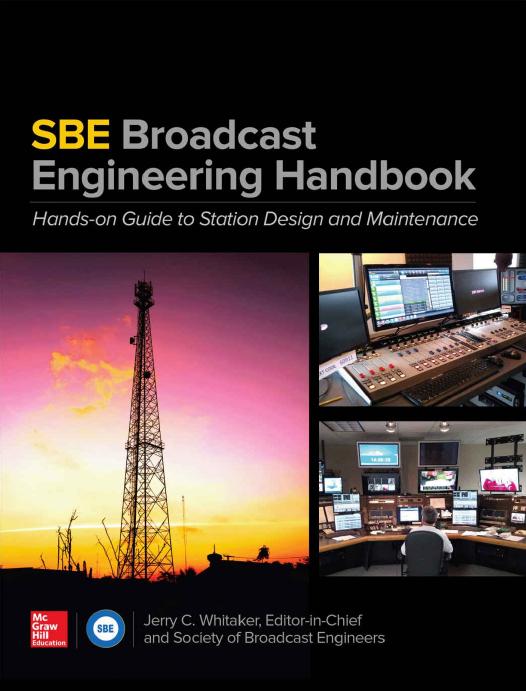The SBE Broadcast Engineering Handbook: A Hands-on Guide to Station Design and Maintenance by Jerry C. Whitaker

Author:Jerry C. Whitaker [Whitaker, Jerry C.]
Language: eng
Format: azw3, pdf
Publisher: McGraw-Hill Education
Published: 2016-04-22T04:00:00+00:00
FIGURE 5.1.13 Cutaway view of a typical duct silencer.
Because the baffles in a silencer restrict the flow of air to a certain degree, the silencer can add to the static pressure against which the fan must work, so that the pressure-drop ratings of silencers can become an important consideration. Since the baffles generate a certain amount of turbulence in the airflow, silencers can generate a certain amount of noise. Silencers should be positioned so that the amount of attenuated noise leaving them is still higher than the generated noise of the silencers, which implies that the silencers should be placed relatively close to fans. On the other hand, it is good practice to locate silencers at least five duct diameters downstream of a fan in the supply-air system; otherwise noise generated by turbulent air, especially low-frequency noise, can greatly exceed the rated self-noise of the silencers. Placement of silencers in return-air systems is less critical, but a spacing of at least three duct diameters between fan and silencer is still advisable.
Download
The SBE Broadcast Engineering Handbook: A Hands-on Guide to Station Design and Maintenance by Jerry C. Whitaker.pdf
This site does not store any files on its server. We only index and link to content provided by other sites. Please contact the content providers to delete copyright contents if any and email us, we'll remove relevant links or contents immediately.
| Automotive | Engineering |
| Transportation |
Whiskies Galore by Ian Buxton(41524)
Introduction to Aircraft Design (Cambridge Aerospace Series) by John P. Fielding(32881)
Small Unmanned Fixed-wing Aircraft Design by Andrew J. Keane Andras Sobester James P. Scanlan & András Sóbester & James P. Scanlan(32567)
Craft Beer for the Homebrewer by Michael Agnew(17926)
Turbulence by E. J. Noyes(7690)
The Complete Stick Figure Physics Tutorials by Allen Sarah(7134)
Kaplan MCAT General Chemistry Review by Kaplan(6584)
The Thirst by Nesbo Jo(6432)
Bad Blood by John Carreyrou(6270)
Modelling of Convective Heat and Mass Transfer in Rotating Flows by Igor V. Shevchuk(6218)
Learning SQL by Alan Beaulieu(6023)
Weapons of Math Destruction by Cathy O'Neil(5819)
Man-made Catastrophes and Risk Information Concealment by Dmitry Chernov & Didier Sornette(5638)
Digital Minimalism by Cal Newport;(5383)
Life 3.0: Being Human in the Age of Artificial Intelligence by Tegmark Max(5181)
iGen by Jean M. Twenge(5149)
Secrets of Antigravity Propulsion: Tesla, UFOs, and Classified Aerospace Technology by Ph.D. Paul A. Laviolette(4973)
Design of Trajectory Optimization Approach for Space Maneuver Vehicle Skip Entry Problems by Runqi Chai & Al Savvaris & Antonios Tsourdos & Senchun Chai(4837)
Electronic Devices & Circuits by Jacob Millman & Christos C. Halkias(4739)
